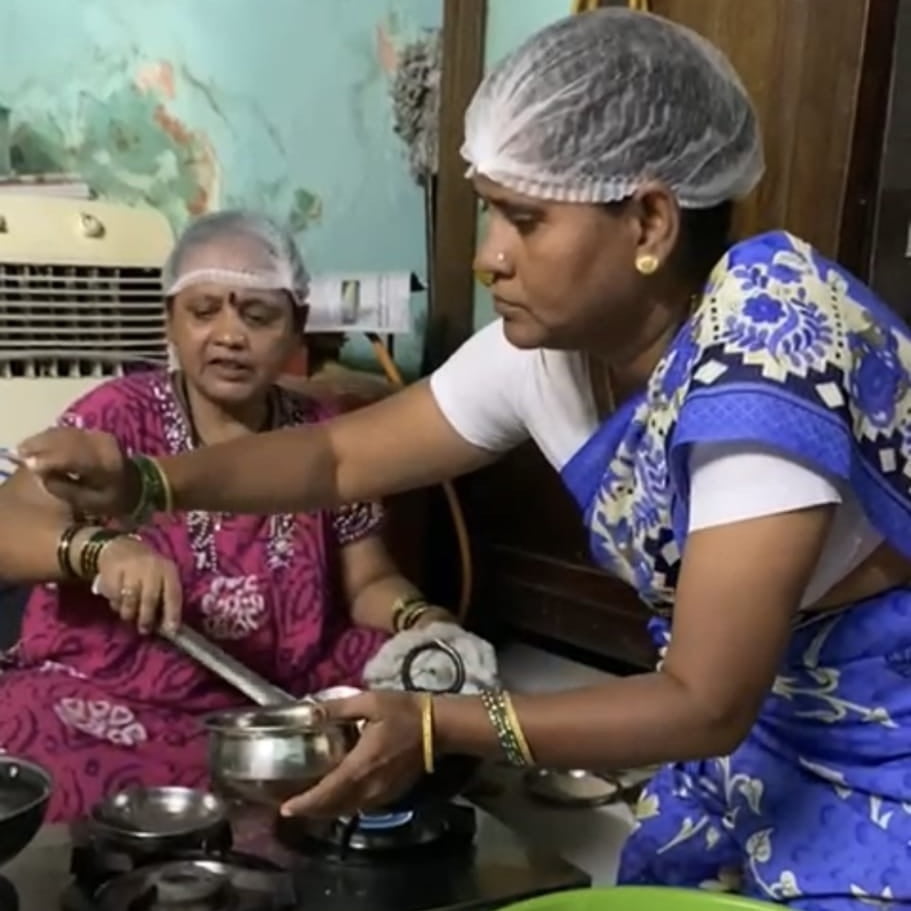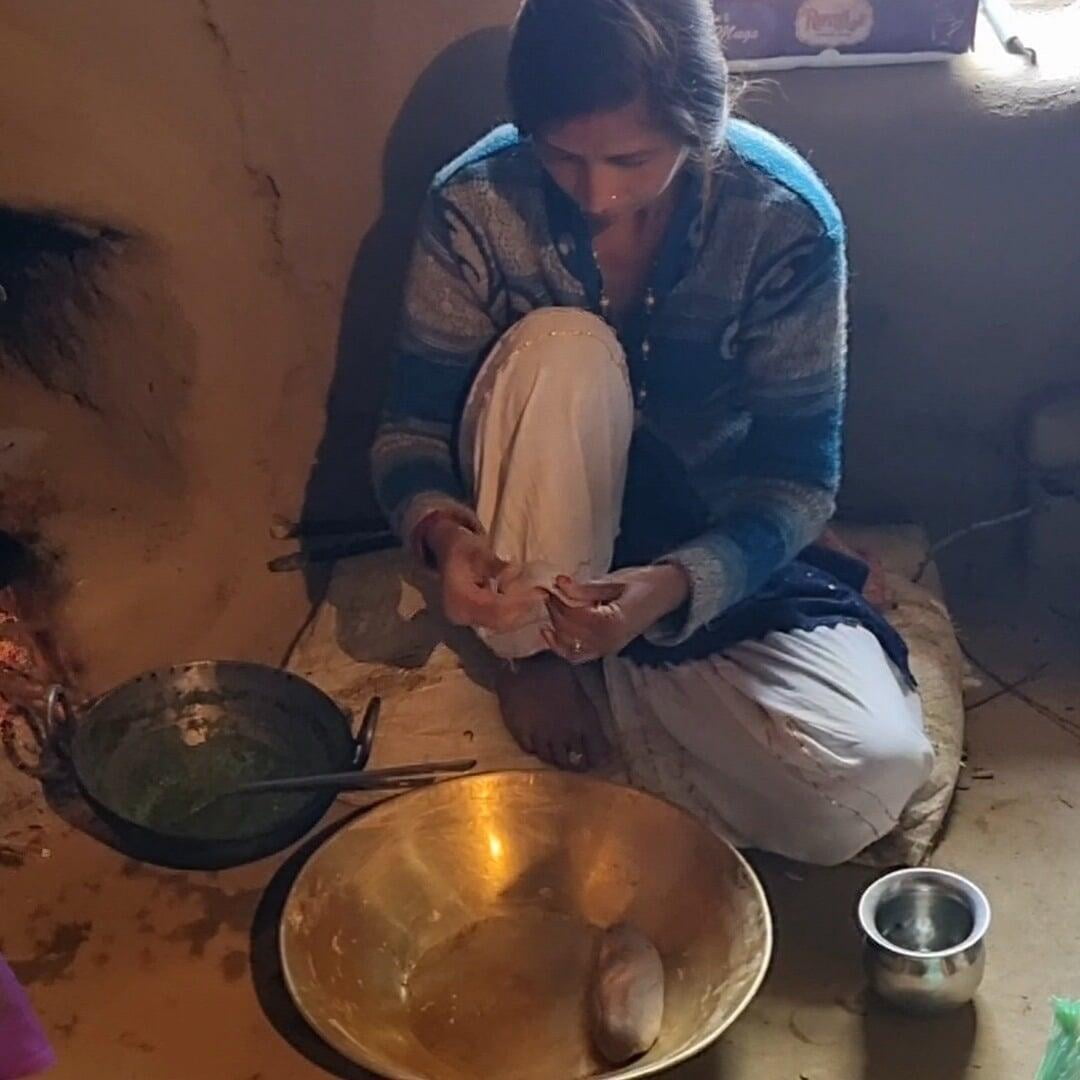Keepers of Food Wisdom
Our effort to unlock the power of food wisdom means we also seek out and celebrate the owners and guardians of this wisdom. We see traditional knowledge and an intuitive understanding of nature at work as they grow, produce, preserve and cook food in various parts of the country, from the salt pans of Thoothukudi, to the mahua forests of Chhattisgarh and the arid plains of Ladakh.
3 'sakhi' and their grand masala
By Priya Joshi, Co-founder, foodwize
I met Sujata Sawant sometime last year. It only takes a few minutes to realise that she is a force. Sujata runs a social organisation, working tirelessly to raise awareness about education and health and is empowering women in various communities across Mumbai. Amongst these is a trio of women in the Swadeshi Mills area of Sion, Chunabhatti. Nalini Sawant, Kavita Kamble and Rupa Kamble form 3 SAKHI, meaning three friends - they make fresh, traditional masalas and traditional sweet and savoury Indian snacks using authentic recipes, time-honoured techniques and generational wisdom.
A few weeks ago, we had the special opportunity to watch Nalini, Kavita and Rupa prepare their special masala, a staple in the Sangli, Satara, Kolhapur regions of Maharashtra. They made it look simple when, in fact, the recipe comprises of no less than 31 individual, fresh ingredients and cooking the masala is a long and patient labour of love.
3 SAKHI masala is absolutely grand; it is all you need to cook a quick, delicious vegetable, meat or fish curry to accompany your roti, bhakri or rice. 3 SAKHI are keepers of food wisdom - they are keeping a traditional, elaborate and unique recipe alive. At one point, this masala was freshly made in every home, as an annual ritual. While women in rural places continue to keep this tradition alive, Sonali, Kavita and Nalini are making sure that it is also preserved in our cities, for present and future generations.
Sonali, Kavita and Nalini are members of Sakhi and make fresh traditional masalas and Indian snacks
For the masala, they gather all the ingredients and weigh them out in the right proportions
One by one, Sonali and Kavita fry all the ingredients in oil, nearly 30 of them, and set them aside for cooling. Sweet and spicy aromas fill the room

In parallel, Nalini slow cooks the onions and red chillies until they are ready

All the ingredients are cooled, mixed and then pounded into the masala

Sakhi's Masala is made with care and is keeping a traditional recipe and taste alive
The richness of ridge gourd
By Biman Roy, Founder, Bon
I grew up in rural Bengal and memories of my childhood are still fresh when each year, soon after rice harvest, my mother Manasi Roy would go to nearby farm fields to forage leafy greens. We would have leafy greens not only in winter but, all year around. The Bengali community’s affairs with our gardens are often overshadowed by our fondness for fish; the former also plays a vital role in our culture. Take the monsoon, for example. Historically, this is not a good season for vegetables because many vegetables spoil in excess rain. Besides gourds like ridge gourd, snake gourd and bitter gourd, we eat a lot of leafy greens. In our villages, we have a saying that after the Ratha Yatra, one should not eat greens that grow close to the ground, contaminated with pollutants. Instead, in the monsoon, eat leaves that grow far away from the earth like moringa, jute, sponge gourd, ridge gourd and bottle gourd to name a few.
My mother is a living encyclopaedia for many traditional dishes prepared with leaves. Last weekend, she prepared one of my favourites, called ‘torhi patar bora’. The main ingredients are ‘torhi pata’ i.e. ridge gourd leaves, yellow mustard flour/paste, onion, salt, turmeric powder, chilli, garlic and oil for frying. If you have four leaves, slice 3-4 pieces of medium sized onions, add two tablespoons of yellow mustard flour or paste, one tablespoon of salt, one sliced clove of garlic, two sliced chilies and a little turmeric powder. To enhance the taste, add one teaspoon of ground nut paste or poppy seeds paste. Mix all these ingredients together with a little water. Stuff each leaf with one quarter of the mixture and fry it in a pan. Eat it as a snack or with hot rice!
My mother, Manasi Roy, is a living encyclopaedia of traditional dishes prepared with leaves.
For the torhi pata bora, she mixes all the ingredients together, to make the stuffing.
Gently, she stuffs the mixture into each ridge gourd leaf to prepare it for frying.

She fries the stuffed ridge gourd leaves in some oil.

She covers the pan with a lid to make sure the leaves are cooked thoroughly.

Fried ridge gourd leaves and fried banana flowers
What the forager of nettles knows
By Priya Bala, Writer and Chef
In the picturesque village of Meoda in the Kumaon hills, locals grow an array of grains, lentils, greens, vegetables and luscious stone fruits. Their diets are supplemented also with foraged foods. For them foraging is not the discovery experience it is for urban dwellers who may go on the occasional hunt for mushrooms or monsoon greens. It's everyday sustenance. I was fortunate to observe traditional wisdom and practices at work when I stayed at the beautiful Fiddlehead Farms in this region. My host, the warm and knowledgeable Kiran Bhushi took me on a guided tour into a village home in Meoda. From time to time Lakshmi Devi goes into the fields surrounding her modest little house to gather stinging nettle, the perennial known as bichu buti in these parts. Nettles are nutrient-dense, packed with vitamins, minerals and healthy fats.
She uses a tong-like implement to gather the leaves. If the nettles are touched they cause extreme burning and itching. The leaves must be boiled to remove the sting.
The boiled greens are ground to a velvety paste on a stone.
The vivid green paste is then cooked with chillies and garlic.

Lakshmi Devi's daughter pats out mandua ki roti and her mother cooks them on a wood fire.

They serve this hearty satisfying meal to strangers with the warmth that would seem these days to exist only in small homes in our villages.

Lakshmi Devi is 65 and weather beaten. She has arthritis but can't always afford medical care. She makes a switch of nettles and lashes her knees with it. The stinging overwhelms the pain. She has taught her daughters to forage and cook nettles. "Very few people do it now", she says.









